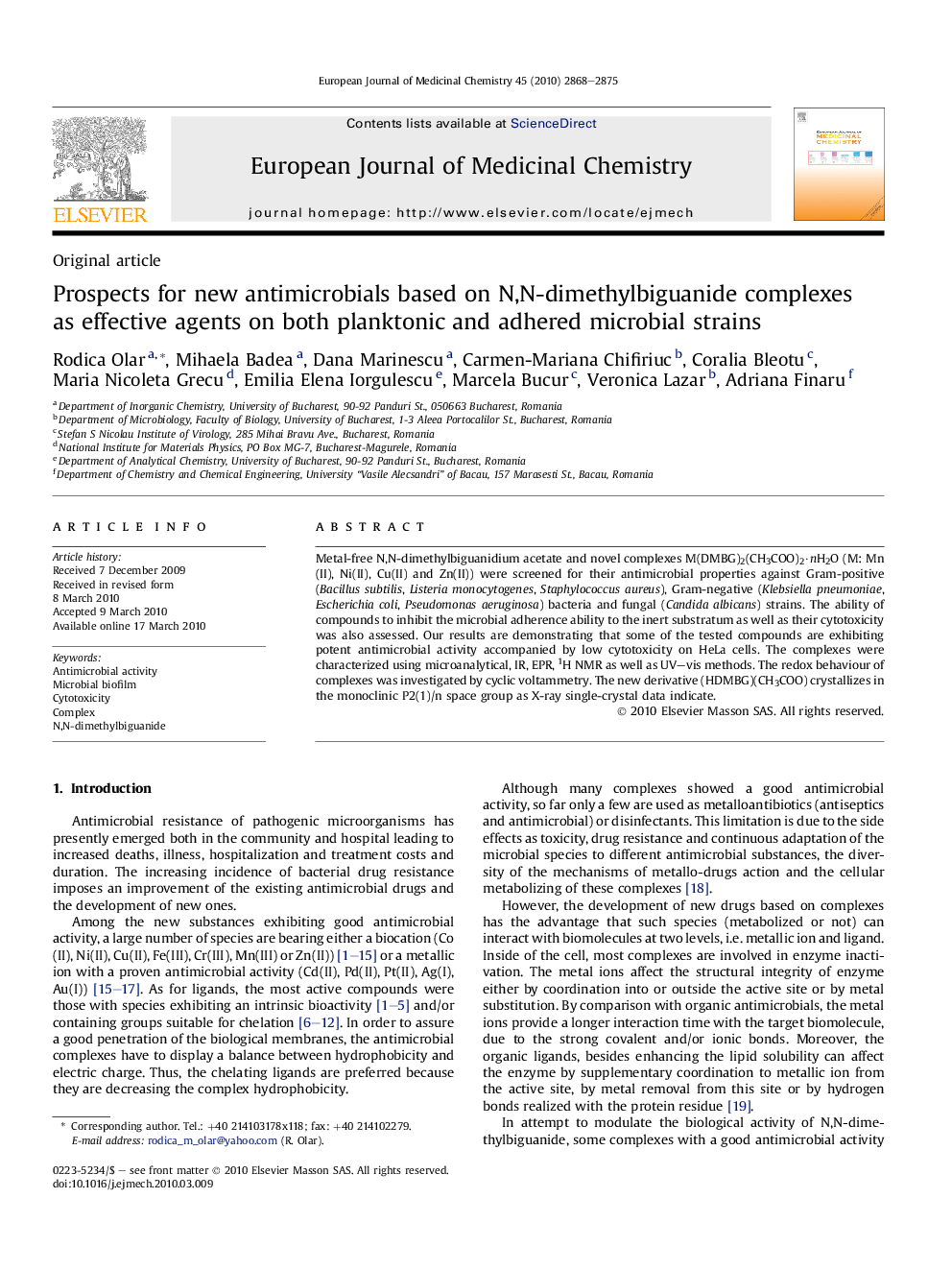| Article ID | Journal | Published Year | Pages | File Type |
|---|---|---|---|---|
| 1396401 | European Journal of Medicinal Chemistry | 2010 | 8 Pages |
Metal-free N,N-dimethylbiguanidium acetate and novel complexes M(DMBG)2(CH3COO)2·nH2O (M: Mn(II), Ni(II), Cu(II) and Zn(II)) were screened for their antimicrobial properties against Gram-positive (Bacillus subtilis, Listeria monocytogenes, Staphylococcus aureus), Gram-negative (Klebsiella pneumoniae, Escherichia coli, Pseudomonas aeruginosa) bacteria and fungal (Candida albicans) strains. The ability of compounds to inhibit the microbial adherence ability to the inert substratum as well as their cytotoxicity was also assessed. Our results are demonstrating that some of the tested compounds are exhibiting potent antimicrobial activity accompanied by low cytotoxicity on HeLa cells. The complexes were characterized using microanalytical, IR, EPR, 1H NMR as well as UV–vis methods. The redox behaviour of complexes was investigated by cyclic voltammetry. The new derivative (HDMBG)(CH3COO) crystallizes in the monoclinic P2(1)/n space group as X-ray single-crystal data indicate.
Graphical abstractA series of new complexes M(DMBG)2(CH3COO)2·nH2O (M:Mn, Ni, Cu and Zn; DMBG: N,N-dimethylbiguanide) as well as the derivative (HDMBG)(CH3COO) have been synthesised and evaluated for their antimicrobial, antibiofilm as well as cytostatic activity.Figure optionsDownload full-size imageDownload as PowerPoint slide
